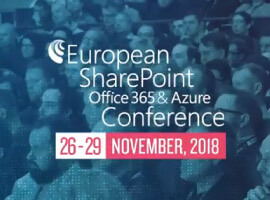Ostfildern, Germany,11 January 2011 – Coextant Systems today announced the release date for Hyper.Net 6 Service Pack 3, the latest update of its Enterprise Content Services technology for Microsoft SharePoint and other platforms. ![]()
Hyper.Net is an enterprise Web Service that automatically converts and re-purposes documents and other information managed in any document storage solution, e.g., SharePoint, into user-optimized, multi-format content and publishes it into archiving systems, intranets, information portals, Web sites and social networks running on any platform. The product is widely used internationally to completely automate the flow of corporate information to the end-user community.
The service pack, which includes new support for multi-tenancy and the ability to customize and extend the administration console using SilverLight, also delivers new and enhanced converters for InfoPath 2010, EML format email, TIFF and SharePoint lists. The service pack also enables the storage and dynamic retrieval of published content from Azure and any other content store in blob format, allowing the organization to optimize the performance of Web applications that require access to extremely large, storage-intensive publications.
The service pack, which is currently completing beta test, is scheduled for general availability on 16 January, 2012.
Hyper.Net 6.3 Highlights
Multi-tenant architecture: The new architecture allows organizations to centrally deploy and administer Hyper.Net to simultaneously serve the needs of multiple “customers” that can include, for example, separate applications, business units and/or subsidiaries. The new architecture also enables service providers to offer secure, comprehensive content conversion and publishing services to multiple unrelated businesses or customers at the same time. Specific support for SharePoint server farms is included.
Publication request administration: Transformation requests sent directly to Hyper.Net’s Web Services interface can now be displayed within the Hyper.Net Administration Console along with requests received through Hyper.Net’s traditional document storage connectors (such as the Hyper.Net document storage connector for SharePoint). Large organizations are thus enabled to intuitively filter, delete, re-queue, manage rights and monitor the entire load of transformation requests sent to Hyper.Net, regardless of source.
Customizable administration console: A new, optional Silverlight GUI for the Hyper.Net Administration Console makes it possible to customize specific administration views and tasks. Customizable areas in the SilverLight GUI include Hyper.Net’s configuration profiles, interactive lists, search and filtering functions, navigation and content-sensitive help. The extension supports SilverLight’s plug-in model for 3rd party tools.
Blob manager: Organizations working with very large publications may face relational database-specific performance problems associated with the storage, update and retrieval of the data (PDF files, images, etc.) associated with each publication. To eliminate such bottlenecks, Hyper.Net 6.3’s blob manager enables the XML-based storage of very large publications on file systems and other content stores-including Azure. Only a reference to the blob is stored in the traditional database. The blob itself is retrieved from the designated storage facility on demand by any requesting Web application. The flexible, three-level blob management architecture also makes it possible to use multiple storage facilities (both relational and non-relational) at the same time.
SharePoint list converter: A new SharePoint list converter allows organizations to recursively convert and publish any content placed on a SharePoint list (including PDF content) into a single PDF or PDF/A file-along with all of each list item’s associated attachments. The layout of the resulting PDF file, which can be printed, compounded and/or archived using traditional approaches, can be flexibly controlled using intuitive, Word-based layout templates. This feature is excellent for implementing “push the button” meeting minutes, proposal generation and other document assembly solutions.
Compound PDF enhancements: Hyper.Net’s compound PDF functions have been extended to create sequential page numbering throughout any compound publication, the creation of a common table of contents based on this numbering and context- and page-sensitive metadata stamping and watermarking. The new power enables the compounding of content from an unlimited number of source files into a single, cohesive, printable PDF publication for end-users or audit-proof PDF/A file for the archive.
Enhanced PDF handling: The process of converting and publishing PDF, PDF/A, compound PDF and compound PDF/A files has been enhanced to allow automatic enablement or disablement of the following properties in the output file: write protection, print protection, copy protection, display annotations, combine documents, hide toolbar and hide menu bar. It is also possible to automatically set passwords to further protect sensitive information and allow conformance with corporate PDF handling policies.
# # #
About Coextant Systems International
Coextant Systems helps businesses automate and optimize the flow of content within the organization. Its mature products completely automate the population and management of content in portals and other business-critical applications. Modern Web Services technologies convert, publish, distribute and integrate authored content across platforms, applications and technologies in multiple formats, structures and languages.
Coestant were Sliver Exhibitors at the European SharePoint Conference 2011. Stay tuned for more content by joining our community or by following us on twitter or facebook.










